

 |
Search the Site with

|
 | 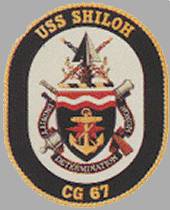 | 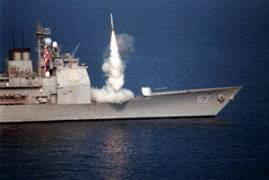 |
USS SHILOH is the 21st cruiser in the TICONDEROGA - class and the seventh ship in that class built by Bath Iron Works in Maine.
| General Characteristics: | Keel Laid: August 1, 1989 |
| Christened: September 8, 1990 | |
| Launched: September 8, 1990 | |
| Commissioned: July 18, 1992 | |
| Builder: Bath Iron Works, Bath, Maine | |
| Propulsion system: four General Electric LM 2500 gas turbine engines | |
| Propellers: two | |
| Blades on each Propeller: five | |
| Length: 567 feet (173 meters) | |
| Beam: 55 feet (16.8 meters) | |
| Draft: 34 feet (10.2 meters) | |
| Displacement: approx. 9,600 tons full load | |
| Speed: 30+ knots | |
| Cost: about $1 billion | |
| Aircraft: two | |
| Armament: | |
| Homeport: Yokosuka, Japan | |
| Crew: 33 Officers, 27 Chief Petty Officers and approx. 340 Enlisted |
Crew List:
This section contains the names of sailors who served aboard USS SHILOH. It is no official listing but contains the names of sailors who submitted their information.
About the Ship's Coat of Arms:
 The Shield:
The Shield:
The ship's shield shows Blue and Gold which are the traditional Navy's colors. Red denotes courage, sacrifice, and the blood shed at the epic battle of Shiloh. White represents high ideals and optimism. The anchor symbolizes sea power, while the cross on the stock refers to Shiloh Church and the Civil War battle for which the ship is named. The red compass rose, simulating a burst, symbolizes the concentration and the intense fighting in the "Hornet's Nest" at Shiloh. The compass rose also represent the multi-faceted mission of SHILOH. The red and white wavy bars commemorate "Bloody Pond" and the valor displayed during the battle and also refer to the sea and SHILOH's three mission areas: anti-air, anti-surface, and anti-submarine warfare capabilities.
The Crest:
The crest's arrowhead, divided into blue and gray, together with the Union and Confederate flags, recalls the Civil War. The arrowhead also suggests the vertical launch capabilities of the Aegis Cruiser. The splintered peach tree symbolizes the aftermath of the Battle of Shiloh. The peach trees, in bloom at Shiloh during the battle, stood stark contrast to the destruction and violence of the fight which pitted brother against brother. The supporters show Civil War weapons, the musket and the cannon, and reflect the close conflict on the field of Shiloh. It was the greatest battle ever fought on the American continent, up to that date.
History of USS SHILOH:
USS SHILOH's keel was laid on August 1, 1989, and she was christened on September 8, 1990.
USS SHILOH launched 14 Tomahawk cruise missiles to attack selected air defense targets south of the 33rd parallel in Iraq on 3 September 1996, as part of Operation Desert Strike. The attacks were designed to reduce risks to the pilots enforcing the expanded no-fly zone announced by President Clinton in response to an Iraqi attack against a Kurdish faction. The USS SHILOH was part of the USS CARL VINSON (CVN 70) Battle Group that moved into the northern Arabian Gulf the previous week responding to escalating activity by Iraqi ground forces.
USS SHILOH entered in July 1998 as part of the ABRAHAM LINCOLN Battle Group the Arabian Gulf where it remained until late October to early November.
On 24 September 1999, USS SHILOH launched an Standard Missile Three (SM-3) in the waters off the Hawaiian Islands off the Pacific Missile Range Facility and as part of the AEGIS Leap Intercept (ALI) project. The purpose of the test conducted in the waters off the Hawaiian Islands, was to collect valuable information to correct problems and have a successful launch testing of the first two stages of the missile. The SM-3 used to destroy aircraft, was slated to incorporate a new duty; that of intercepting and destroying intercontinental and theater ballistic missiles as part of the Navy Theater Wide Program. Once placed in service, the SM-3 missile would complement the armement of Aegis-class cruisers and ARLEIGH BURKE-class guided missile destroyers, with the SM-3 carried aboard cruisers and destroyers in greater numbers. During the test, the SM-3 flew a nominal trajectory through second/third stage separation.
USS SHILOH successfully demonstrated the launch and flight sequence through third stage separation as well as verified flight stability at extreme altitude. Though the original plan had been to conduct all Flight Test Round shots from USS SHILOH, the need for further testing conflicted with the ship's operational schedule. Therefore, it was decided by the CNO to shift to USS LAKE ERIE (CG 70) to conduct the next firings in the ALI testing program.
USS SHILOH took part in June 2000, in "Exercise Pacific Blitz" off the west coast of Kauai, Hawaii, at the Pacific Missile Range Facility (PMRF) located on Kauai. The exercise, held in conjunction with RIMPAC 2000, followed two days of target tracking and joint services interoperability testing. The exercise was a major step toward achieving joint service interoperability for Theater Ballistic Missile Defense and battle force management During the exercise, USS SHILOH tracked threat representative targets with SPY-1 radar and communicated these tracks to other units via JTIDS link. SHILOH, with the prototype Area Air Defense Commander (AADC) system installed, was also used to display and record the missile events throughout the exercise.
USS SHILOH deployed in August 2000 as part of the ABRAHAM LINCOLN Battle Group for a scheduled six-month Western Pacific and Arabian Gulf deployment. During the deployment the Battle Group conducted operations in support of Operation Southern Watch. SHILOH returned to San Diego in February 2001.
On July 20, 2002, SHILOH departed San Diego on her next deployment. Again assigned to the ABRAHAM LINCOLN Battle Group, SHILOH operated in the Arabian Gulf and was initially scheduled to return home on January 20, 2003, but the Battle Group - while already underway home - was ordered to remain in the Gulf area to be able to participate in Operation Iraqi Freedom which started in March.
After more than 9 months at sea, SHILOH and the Battle Group finally returned home to the US in early May 2003.
On August 29, 2006, the SHILOH arrived at Yokosuka, Japan, to relieve the USS CHANCELLORSVILLE (CG 62) as a forward deployed naval unit.
Accidents aboard USS SHILOH:
| Date | Where | Events |
|---|---|---|
| June 8, 2017 | 180 miles east of Okinawa | A sailor is reported missing and reported overboard at approx 9:30p.m. Aircraft from three ships, including the aircraft carrier RONALD REAGAN (CVN 76), as well as eight ships subsequently conduct a 50-hour search covering more than 5,500 square miles, but are unable to recover the sailor. On June 11, the search was called off and the sailor was presumed dead. However, on June 15, the missing sailor was found alive aboard USS SHILOH. The Navy is presently investigation how the sailor remained undetected for such a long time. |
About the Battle of Shiloh:
In March 1862, Major General Henry W. Halleck was put in command of all Federal forces in the Mississippi Valley, and he initiated a slow advance which he sent his two armies along the Tennessee River. By early April Ulysses S. Grant had some 37,000 men near Shiloh Church and Pittsburg Landing, close to the Tennessee-Mississippi border, and off to the east Don Carlos Buell's 25,000 were on their way from Nashville to join him. Meanwhile, Albert Sidney Johnston was desperately assembling all the Confederate troops he could find Corinth, Mississippi. He had more than Grant, but he would have to strike before Buell arrived.
The Union position was a reasonably strong one, but Grant and his division commanders felt it would be bad for morale to have the men entrench. General C.F. Smith told Grant, "By God, I want nothing better than to have the Rebels ... attack us! We can whip them to hell. Our men suppose we have come here to fight, and if we begin to spade, it will make them think we fear the enemy." In the Federal camps a peach orchard was in glorious bloom, and war and killing seemed remote.
But just 25 miles to the south Johnston was pushing his raw levies onto the roads. Like most of Grant's men, these Confederates were as green as grass. They ambled along, whooping and shouting, firing their guns just to see if they would work, driving their officers into a frenzy. P.G.T. Beauregard, second in command, urged that the attack be called off, but Johnston was adamant: "I would fight them if they were a million". He ordered an assault for dawn on Sunday, April 6.
Grant was caught off guard, and in the first day's fight his army was almost pushed into the Tennessee River. It rallied just in time, Johnston was killed in action, and at dark Buell's troops began to arrive and one of Grant's divisions which had been delayed in reaching the field got to the scene. On the second day the Federals reversed the tide, and by mid afternoon Beauregard had to admit defeat. He drew his badly battered army back toward Corinth, and the Federals, equally battered, made no more than a gesture at pursuit. The greatest battle ever fought on the American continent, up to date, was over. The Federals had lost 13,000 men, the Confederates, 10,000. The troops had fought with impressive valor, but they had been poorly handled, especially on the Union side.
USS SHILOH Patch Gallery:
 | 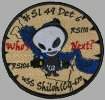 |
USS SHILOH Image Gallery:
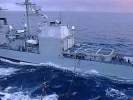 |  | 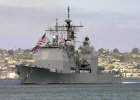 | 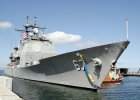 | 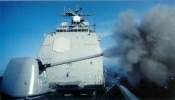 |
 | 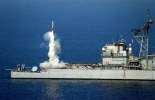 | 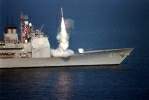 |  | 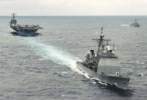 |
 | 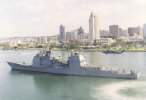 |  |
The photo below was taken by Ian Johnson and shows the SHILOH alongside Victoria Quay in Fremantle harbor, Australia, on January 9, 2003. At the time, SHILOH was assigned to the ABRAHAM LINCOLN (CVN 72) battle group.
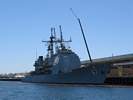 |
The photos below were taken by Shiu On Yee during USS SHILOH's port visit to Hong Kong June 16 - 20, 2014, while the ship was assigned to the USS GEORGE WASHINGTON (CVN 73) Strike Group.
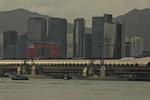 | 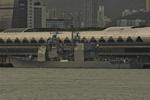 | 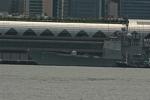 | 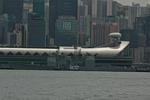 | 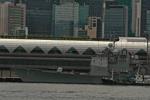 |
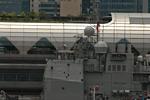 | 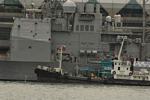 | 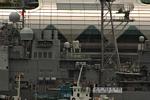 | Click here for more photos. | |
The photos below were taken by Michael Jenning and show the SHILOH at Yokosuka, Japan, on August 3, 2019.
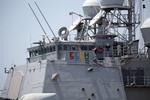 | 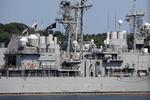 |  |  |  |
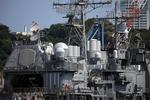 |  |  |  |  |
 Back to Cruisers list.
Back to Cruisers list.  Back to ships list.
Back to ships list.  Back to selection page.
Back to selection page.  Back to 1st page.
Back to 1st page.